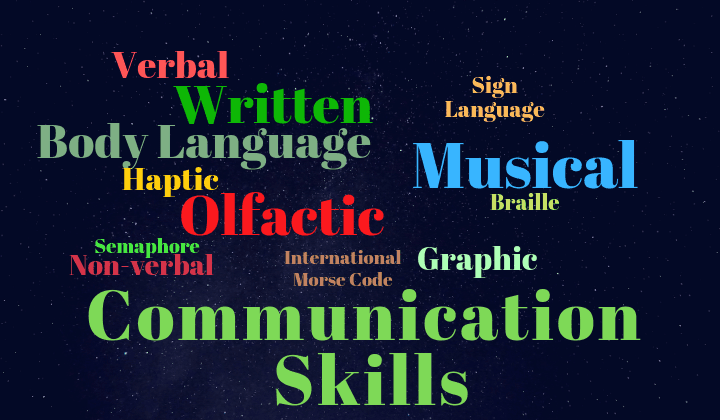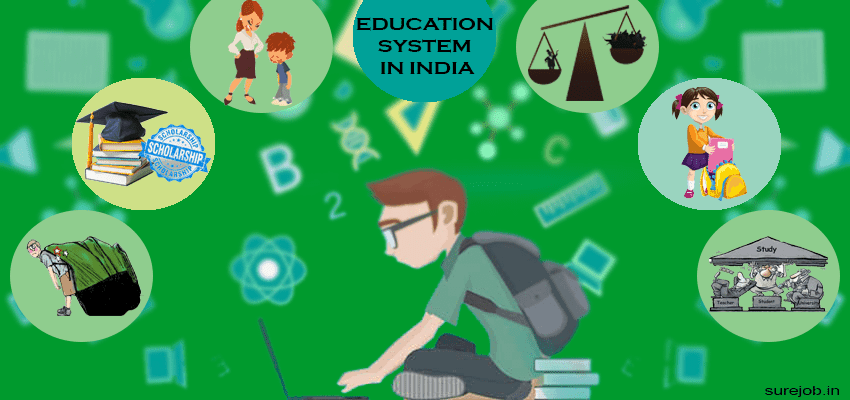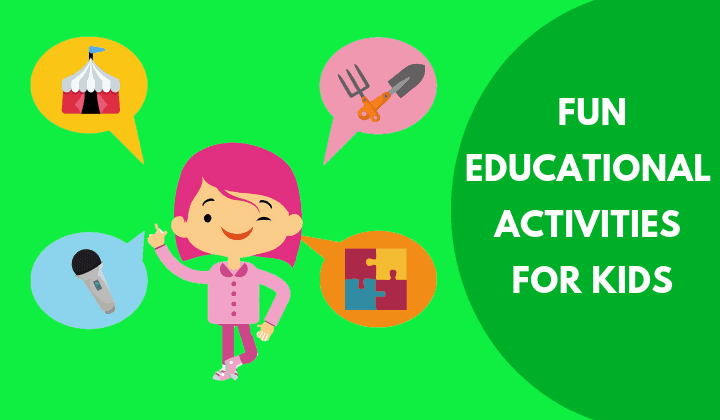What is communication? Communication is a basic feature of life. It allows us to convey thoughts, opinions, emotions and vital information in different forms.
Everything around us- living and non-living communicates with us in different ways. Our minds and senses have to be tuned to understand what is being communicated and intelligence to utilize this information.
In modern times, communication has gained immense significance. Different types of communication skills are essential for our jobs, business, social and family relationships and defense against danger, among others.
Therefore, it is highly imperative to know about different types of communication. Indeed, effective communication skill is vital to prosperity and well-being.

Basic Communications
All living beings possess basic abilities to communicate. Hence, we look at different types of communication skills such as basic communications.
There are two major types of communication which includes verbal and Non-verbal communication.
1. Verbal Communication
Verbal communication is the most basic element of human life. It is innate skill of humans and animals. It enables us to talk with each other in person.
Verbal communications are very important when you are looking for a job, working or engaged in business. Additionally, verbal communication helps build or even break human relationships.
Nowadays, every employer looks at hiring jobseekers that possess excellent communication skills. This also includes verbal communications. Without proper verbal communication, it would be difficult to interact with seniors and colleagues at workplace.
You will be unable to interact properly with clients and associates while working for someone or doing own business.
Further, verbal communication skill is extremely important in protecting ourselves. Using speech, we can alert others or get warned of any impending danger or disaster. Verbal communication plays a very important role in building or breaking human relationships.
2. Written Communication
Written communication between humans began at least 5,000 years ago. This is proven by artefacts found during excavations at sites of the ancient Indus Valley civilization, stone tablets found in Mesopotamia, writings on animal skins in China and hieroglyphics of Egypt.
In the modern era, written communication occurs by writing letters, notes, memos and notices. Ancient humans used pigeons to send letters to distant places.
The postal system further boosted written communications by making possible people to send letters to foreign countries. Books, newspapers are also form of written communication since they give us knowledge or entertainment.
Excellent written communication skills are vital for every work. They allow you to communicate within the office or with external entities.
Written communication is integral part of any business. Even a receipt or invoice issued by a store can be considered as written communication: It provides information about what you bought and how much money it cost.
3. Electronic Communication
Electronic communication allows us to convey information using landline and mobile telephone, email, Instant Messengers (IMs), websites, social media platforms, videos, TV and radio. We can provide or get verbal and written information using electronic communication.
Speed is the inherent advantage of electronic communication. An email, IM message sent by Short Messaging System (SMS), Multimedia Messaging System (MMS), WhatsApp and other resources reaches people instantly.
Emails are generally delivered within a few minutes. Social media allows us to communicate with family and friends while videos, TV and radio help disseminate information quickly.
Police, military, government officers, civilians extensively use two way radio communication and Ham radio operates worldwide.
To succeed at work and business, we require excellent electronic communication skills too.
This includes writing professional emails, sending messages within an office group, communicating with clients and business associates. Electronic communication is extremely important in disaster mitigation.
Non-Verbal Communication
Non-Verbal Communication can be defined as both inborn and acquired skill. It is an integral part of communications. Nowadays, your skills also matter when it comes to employment, business or building relationships.
4. Body Language
Body language is the most important form of non-verbal communications. People nowadays do not rely solely on what you say during a meeting. They will also form an opinion about your overall personality depending on your body language.
It is essential to develop your personality and you can do this by reading self-help and personality development books. So, to get success in an interview you have to develop your personality.
Often, body language betrays thoughts and reveals a part of our personality that we may wish to conceal.
Eye contact, hand gestures, sitting posture, walking style, lip movement- all form part of body language. Hence, it is important that our body language should reflect what we say.
Expert interviewers closely study body language of a jobseeker to know whether they are earnest about working and telling the truth. They also try and find how you react to unexpected questions.
Modifying your body language to match words is arduous. Because body language is dictated by our thoughts rather than speech. However, some training can help you develop skills by which you can synchronize thoughts, speech and can get effective body language tips.
5. Graphic Communication
Graphic communications is a very important skill for professionals including doctors and engineers, logistics experts and designers.
It involves communicating with people using pictures and graphic designs. Look around your home or office and you will find several examples of graphic communications.
A great example of graphic communications is the red colored board with graphic of a skull and bones. This indicates danger.
Similarly, boxes of electronics carry graphics that warn logistics provides about how to handle the item such as maximum temperature it can be stored at, number of boxes that can be stacked safely and the side that should be kept upwards.
Using graphic communication, it is possible to convey information to people that do not speak your language or are illiterate. It also allows you to communicate with people with impaired speech and hearing and children.
Professionals in all fields utilize graphic communications to get a message across. For example, doctors use charts in their clinics that speak of proper nutrition while engineers utilize it for indicating directions, hazards and other important messages to laymen.
6. Haptic Communication
You would definitely have used haptic communications. Whenever you touch someone to express something, you are using haptic communication. It is commonly used in our everyday life.
For example, a teacher patting a student’s back for performing well is form of haptic communications. Similarly, embracing someone to express love without using words is also haptic communications.
Haptic communication allows you to express emotions without the use of words. It is often used by doctors and nurses to comfort a patient.
Militaries around the world, especially special forces like commando units use haptic communication between comrades to indicate danger or give directions.
Having excellent haptic communication skills helps a lot if you are in a profession that requires empathizing with people. It is generally used with other forms of non-verbal communications such as gestures.
A classic example of haptic communication can be found on your landline telephone instrument. The button for number ‘5’ is elevated. It helps you navigate and dial correct number on a keypad, even in dark. It also helps blind persons to use an ordinary telephone handset.
7. Olfactic Communication
Anyone that uses a perfume or deodorant is trying to enhance their olfactory communication with others. It primarily involves communication using olfactory senses (sense of smell) of others.
Olfactic or olfactory communication is very big business around the world. Globally acclaimed brands of fragrances hire highly skilled perfumers at exorbitant salaries to create perfumes that match your personality.
Olfactory communications is also important for the food industry. That is the reason we have flavors. Customers patronize a particular type or brand of food depending on its flavor.
Any business that needs to tempt customers to patronize their products for its smell is using this form of non-verbal communication.
However, olfactory communication also has a flipside. An expensive fragrance you buy can trigger allergy among some people. Others could be outright offended by the strong smell.
You can also get disqualified for that dream job if you smell foul at an interview. Hence, you need to acquire great olfactory communication skills to ensure you remain presentable in any situation.
8. Musical Communication
Music is also used as a means of communication. Songs and tunes are made to convey various moods or instill some quality among people. It ranks among the oldest known forms of communication.
Companies around the world use musical tunes that identify with their product or brand. Patriotic songs instill a sense of nationalism.
You can sing a love song to attract a partner. During World War-II, underground radio stations in Europe played various songs to convey messages to people suffering under Nazi rule.
In the modern world, music is used as an effective means to bridge the cultural divide. Several reputed universities and organizations around the world are engaged in studying how musical communications can be better utilized for various purposes.
Music allows people to share feelings, emotions, share messages, stir masses into action or help overcome stress. Musical communications continue to be a developing field.
This is due to the wide array of musical instruments and themes that are used worldwide.
Special Communication
Special communication can be defined as various systems used to convey information to persons with special needs and to meet certain unique circumstances.
These are very important for educating and providing information to persons with visual and hearing impairment.
9. Braille
Braille can be defined as a tactile form of writing that helps communicate with people that are blind. You can see examples of braille in elevators.
Most modern day elevator buttons indicate the floor number in braille too. This enables blind persons to choose the floor they wish to go, without assistance from others.
This form of special communication is named after Louise Braille of France who lost vision when young.
In his quest to help others similarly afflicted, Braille devised a form of communication that combines written and haptic communication. It uses a tactile code commonly used by militaries to communicate at night.
Visually impaired people can communicate effectively by writing Braille. Special paper, slates and stylus are available for writing Braille. Nowadays, we also have computer keyboards and monitors for Braille.
10. Sign Language
Throughout centuries, civilizations around the world felt the need to communicate with the deaf and people suffering from hearing problems.
This led to the creation and evolution of the sign language. Nowadays, sign language is commonly used to educate people who have hearing problems while providing myriad information.
Reputed news channels worldwide have special bulletins for people with impaired hearing. Additionally, educational institutes hire sign language professionals to ensure those with hearing impediments have equal access and opportunities to learn.
Sign language interpretation is a very lucrative profession worldwide. In India, skilled sign language interpreters make Rs.150 or more per hour. The job involves interpreting what is spoken into sign language.
Other Common Forms of Communication
11. International Morse Code
International Morse Code is a method of communication using tone or light. It is used by ships, airlines, Ham Radio operators, police and militaries around the world.
You can communicate in Morse Code using electronic devices, light or simply by clicking on something.
Morse Code is composed of dots and dashes. This means every alphabet and number is represented by a specific combination of dots and dashes. The most common Morse Code message is the distress signal SOS.
It is transmitted as three dots followed by three dashes and three dots. Telegraph systems around the world use Morse Code to send messages between distant locations.
International Morse Code is generally taught at military schools and institutes that train sailors and Ham Radio operators.
It can be transmitted with a simple radio transmitter. Unlike voice transmissions, Morse Code can be sent using very low power transmitters. The advantage of Morse Code is that it can be transmitted as light and even smoke.
12. Semaphore
If you have seen the guard of a train holding the red, green or amber flag while it leaves or approaches a railway station, it is easy to understand this form of communication.
A semaphore is a form of communication that uses different types of flags to communicate. In olden days, Semaphore was used to communicate between ships.
In modern days, Semaphore communication is used extensively by railways around the world. Railway networks use arms fitted with lights of various colors. These arms are movable. Each position of the arm and color of lights indicates some message.
Semaphore is a very intricate form of communication skill that uses colored lights and movable arms. Generally, it is taught only at military schools and training institutes for railway employees.
Semaphore communications are not dependent upon electricity. Other lighting sources such as candles and oil lamps can be used while arms can be moved manually. Further, Semaphore is a form of communication that can be utilized in any weather.
Wrap Up
Verbal, written, electronic and various forms of non-verbal communication are important for our daily life and work. Hence, it is essential to acquire excellent communication skills.
To comprehend non-verbal communications, you will require a high level of emotional intelligence. Indeed, emotional intelligence or EI is a skill that is much sought after in the employment market nowadays.
Acquiring skills in special communications can help pave a way to a great career. Governments and institutions are taking steps to bring persons with visual and hearing impediments into the mainstream economy and offer equal learning and employment opportunities.
Hence, those who can interpret written and spoken information to Braille and sign languages will be able to find well paid jobs.








